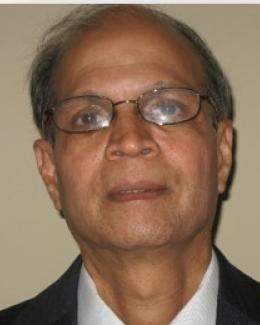Abstract
New Composite Membranes for High Throughput Solid-Liquid Separations at the Savannah River Site
R. Bhave (Oak Ridge National Laboratory. Oak Ridge, TN) and M. R. Poirier* (Savannah River National Laboratory, Aiken SC)
Solid-liquid separation is the limiting step for many waste treatment processes at the Savannah River Site. SRNL researchers have identified the rotary microfilter as a technology to improve the rate of solid-liquid separation processes. SRNL is currently developing the rotary microfilter for radioactive service and plans to deploy the technology as part of the small column ion exchange process. The rotary microfilter can utilize any filter media that is available as a flat sheet. The current baseline membrane is a 0.5 micron (nominal) porous metal filter (Pall PMM050). Previous testing with tubular filters showed that filters composed of a ceramic membrane on top of a stainless steel support produce higher flux than filters composed only of porous metal. The authors are working to develop flat sheet filter media composed of a ceramic membrane and/or ceramic-metal composite on top of a porous stainless steel support that can be used with the rotary microfilter to substantially increase filter flux resulting in a more compact, energy efficient and cost-effective high level radioactive waste treatment system.
Composite membranes with precisely controlled pore size distribution were fabricated on porous metal supports. High quality uniform porous metal (316SS) supports were fabricated to achieve high water permeability. Separative layers of several different materials such as ultrafine metal particles and ceramic oxides were used to fabricate composite membranes. The fabrication process involved several high temperature heat treatments followed by characterization of gas and liquid permeability measurements and membrane integrity analysis.
The fabricated composite membrane samples were evaluated in a static test cell manufactured by SpinTek. The composite membranes were evaluated on several feed slurries: 1 wt. % strontium carbonate in deionized water, 1 wt. % monosodium titanate in simulated salt solution, and 1 wt. % simulated sludge in simulated salt solution and deionized water. Flux as a function of feed flow rate and transmembrane pressure was measured for each of the above described feed slurries.
The authors will discuss the new membrane development efforts, waste slurry filtration performance evaluations and scale-up considerations.


